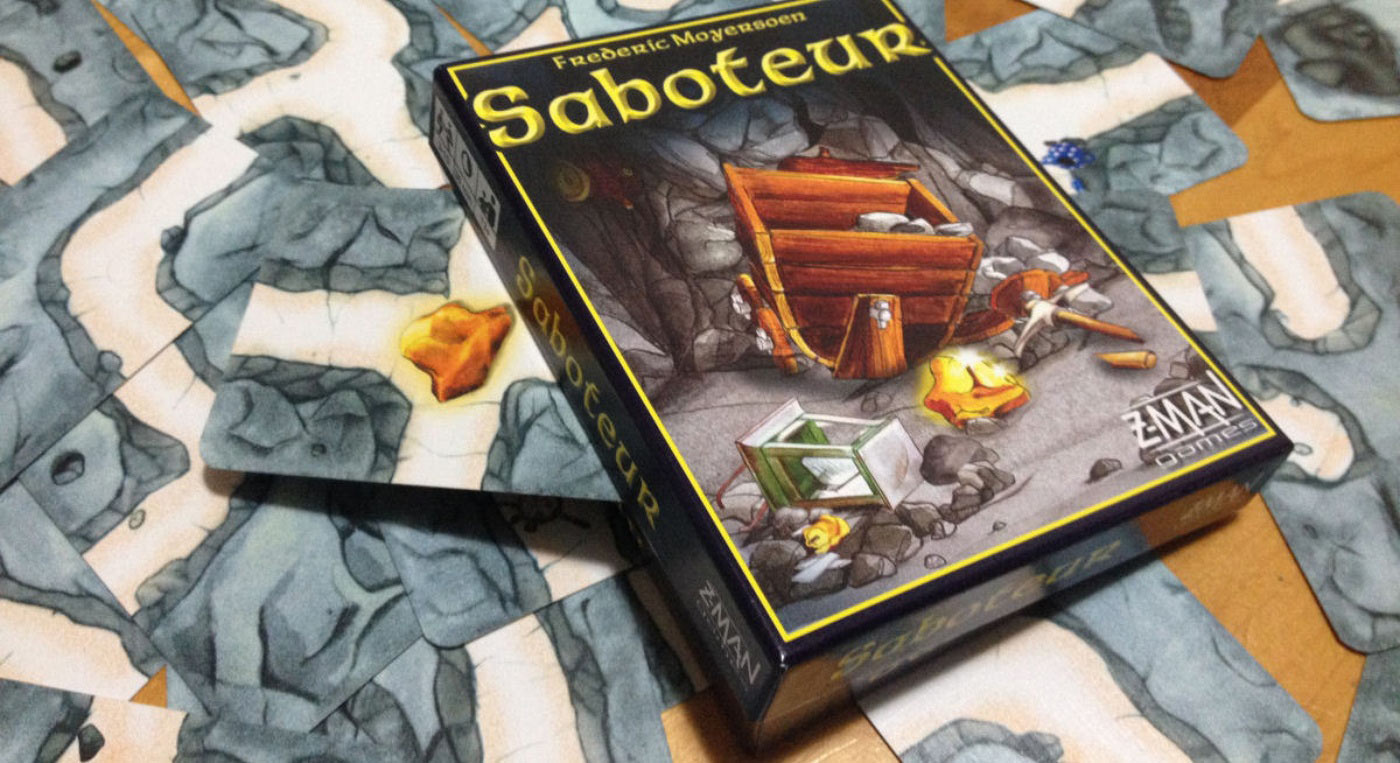Saboteur is a fun, interesting twist on social deduction games, but it ultimately falls short of success due to its poor game balance.
Notes:
- This review will only consider gameplay from the perspective of a single round. During our playtests, we found that rounds felt entirely disconnected, and the multi-round scoring system felt unnecessary, tacked on, and arbitrary. Perhaps for a more dedicated Saboteur connoisseur, determining a winner after multiple rounds is beneficial to the experience, but I feel the true essence of the game lies in its individual rounds, with each round existing in a vacuum separate from all others.
- This review is based on gameplay specifically with 5 people. It is entirely possible that the balance of the game is completely different with more or less players.
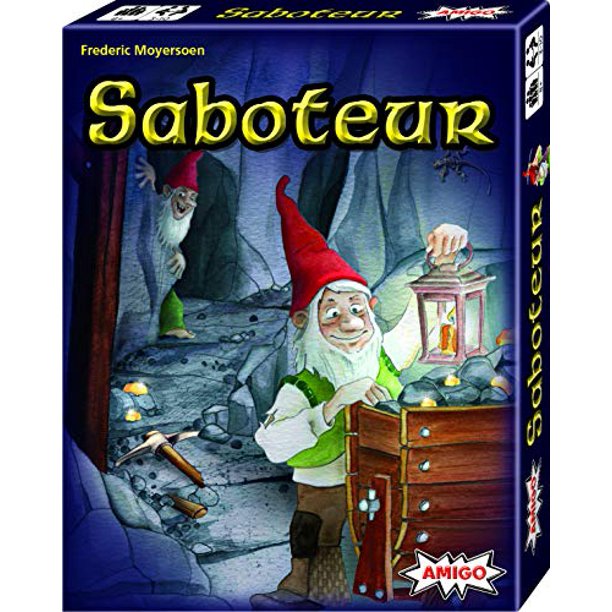
Saboteur is a merger of two popular board-game genres: social deduction and pathfinding exploration. The goal of the game is for the players to build a path to the three goal cards on the right side and to search these goal cards for the treasure. However, as a social deduction game, there is a twist: A small portion of the group is deemed the saboteurs. These people are secretly trying to lie, gaslight, and sabotage the other players’ attempts to reach the treasure. Thus, while attempting to make a path to the goal, the players will constantly suspect every move, accuse each other of betrayal, and hyper-analyze every minute interaction in the hopes of determining who is and is not with the group.

The gameplay of Saboteur is fairly simple.
The board is set up by placing the first goal card 8 cards horizontally away from the start, and the other two goal cards 2 cards directly above and 2 cards directly below the first goal card. Then roles (saboteur or regular player) and regular cards are distributed among the players and the game begins.
On a player’s turn, they must play a card, either by discarding a card and “passing,” placing a path card in a legal location, or playing an action card. After playing a card, the player should then draw a card (if there are cards left to draw) and play proceeds to the next player.
The strategic depth of the game arises through the different types of Action cards.
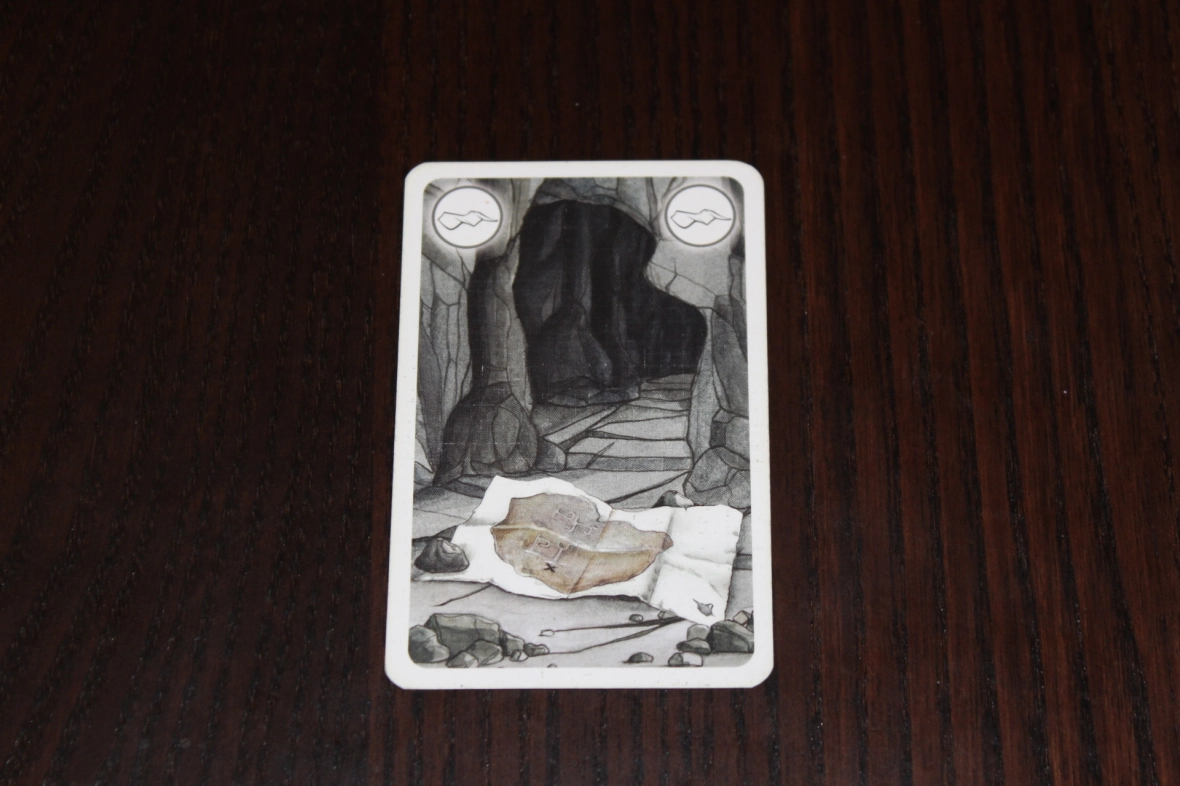
The first type of action card is a Map card, which allows the player to secretly look at one of the goals to see if it contains the treasure. Map cards play a vital role in the game, as the choice of which goals to search is heavily dependent on which goals players believe contain the treasure. Giving some players the option to secretly check the goals provides the perfect opportunity for players to lie about the goals and gaslight other players, creating the tense social situations deduction games thrive on.
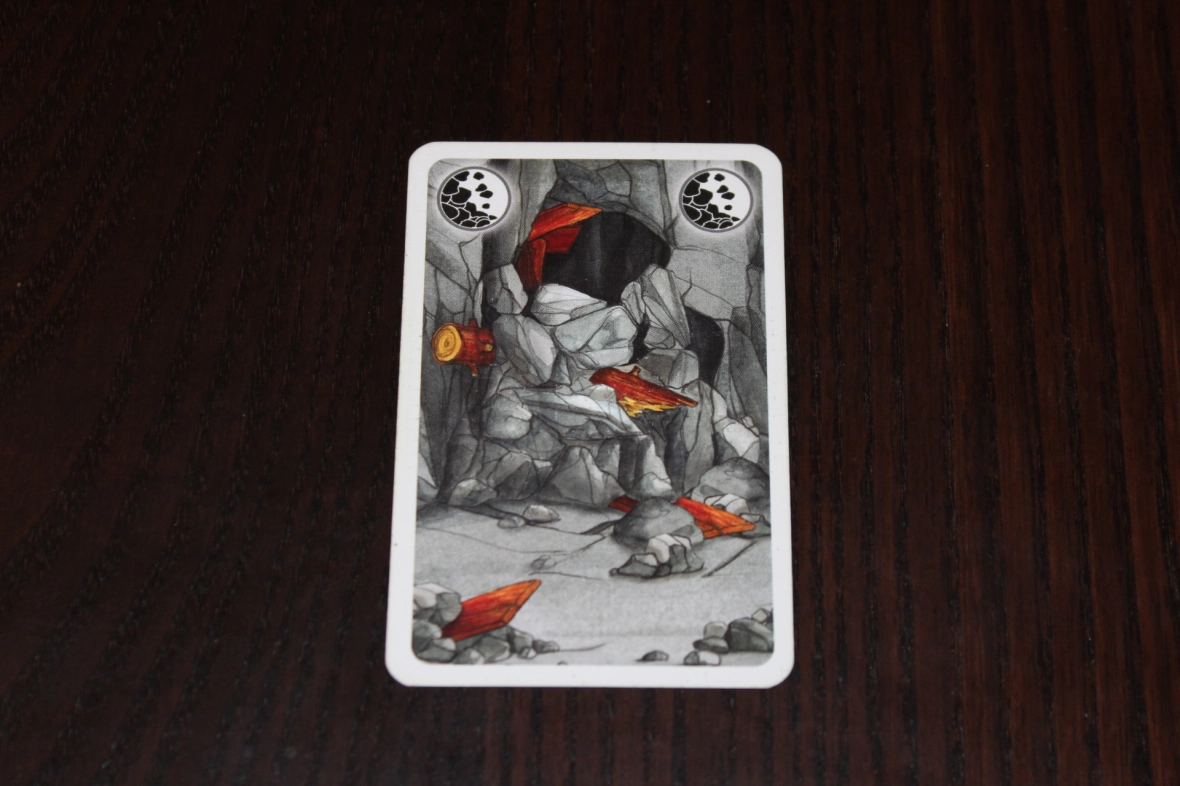
The second type of action card is the Rockfall card, which allows players to remove a single path tile from the board. In our playtests, we did not find this card so useful or impactful, though I acknowledge that we may have simply not understood how to use it. Supposedly, it is really strong for the Saboteur, as they can use it to interrupt paths near the start. Still, we never experienced any substantial strategic use of these cards in our rounds.
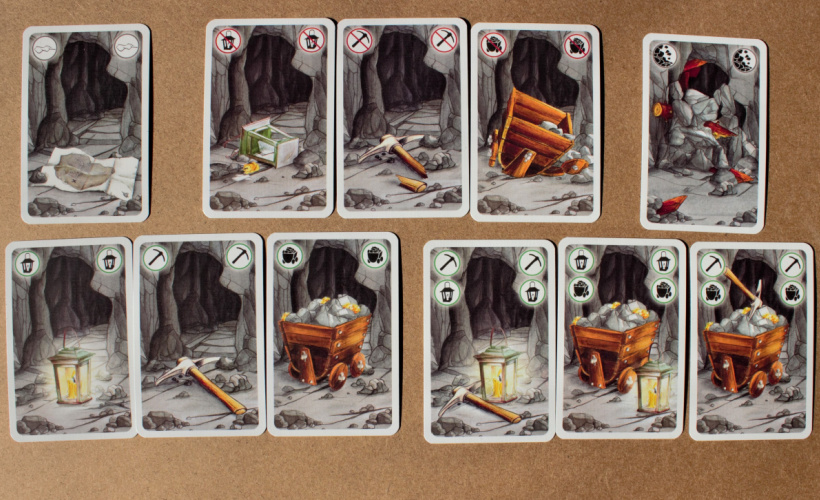
The remaining types of action cards function differently. When these cards are played, they are each assigned to a single player to impact their gameplay.
The first type of card of this kind is the Broken Tools card. If a player has any broken tools assigned to them, they are unable to place any map tiles, so they can only discard and play action cards on their turn. Thus, Broken Tools are a means of reeling in the players and providing risk for the Saboteur, as a Saboteur that is obviously playing against the common interest of the group can receive Broken Tools from any player, effectively removing the Saboteur from the game.
Complementing the Broken Tools cards are the final type of action card: the Fix Tools cards. These cards simply fix broken tools of a given type, as indicated by symbols on both kinds of cards. If a player is given Broken Tools, their only way to regain the ability to place map tiles and influence the game board is if someone, including the player themself, plays a Fix Tools card. However, there are a limited number of Fix Tools cards, and action cards can run out quickly, so it is very likely that players with Broken Tools towards the middle/end of the game will remain unable to place tiles for the remainder of the game.
Finally, the game ends either if the treasure is found or if there are no more playable cards in anyone’s hand.
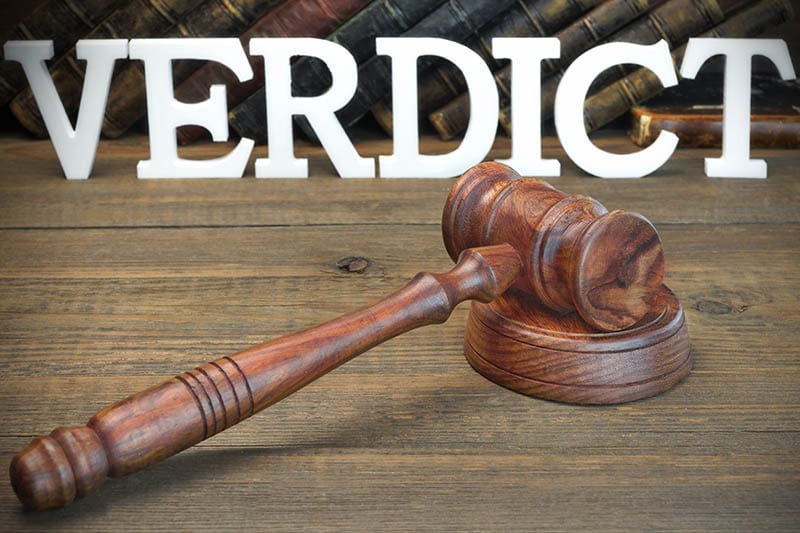
The overlap between the movement and action card mechanics creates extremely interesting social deduction scenarios. There is much for players to analyze to determine suspicious behavior, including tile placements, what players report about the location of the treasure after playing a Map card, which tile a player removes with a Rockfall card, and which players a given player blocks or helps with the Tools cards. If players are suspicious, the Broken Tools cards serve as a great way of locking suspicious people from the game, and also therefore providing an incentive for Saboteurs to remain hidden. The Fix Tools cards wind up becoming a sought-after resource that Saboteurs desperately try to leverage to their advantage through cunning speech and deceit. Additionally, the Saboteurs themselves can leverage the Broken Tools to accuse innocent players, increasing the chaos and making the scenarios even harder for the regular players to deal with.
Unfortunately, despite the benefits of these social deduction scenarios, the game is unfortunately decided before the round even begins as, at least in our experience, it is not feasible for the saboteurs to ever win. The reasons for this unbalance are twofold:
First, the ending conditions of the game favors non-saboteur players. Even though the Map cards provide more than enough information for players to be able to determine which goal to search for the treasure, the game does NOT end when a goal without the treasure is searched. Therefore, if a saboteur manages to pull off the incredible feat of gaslighting and tricking everyone into searching an incorrect goal tile, they are rewarded with nothing other than a minor delay. This issue is exacerbated by the fact that all of the goal tiles are really close together (there is 1 card distance between them), so any small delay in searching for the real treasure will not make a significant difference in the overall outcome of the game since it will only take a couple more moves to move to and search the next goal tile.
Second, Broken Tools are far too strong and encourage a playstyle that renders any sabotaging actions in vain. Because many players can be locked out of the game with Broken Tools and there are only a limited number of Fix Tool cards to reverse these decisions, we quickly discovered that the optimal playstyle is to break everyone’s tools other than one player who everyone can reasonably agree is not suspicious. Though it is difficult to ban every player from the game with Broken Tools, it is certainly possible to restrict a high enough number of players that the game is essentially a guaranteed win for the non-saboteur players. If the saboteur makes any single attempt to sabotage the board, as they are supposed to do, unless the game is already nearing its end (at which point it’s already too late), the saboteur will immediately become suspicious to everyone and will quickly accumulate Broken Tools, thus rendering any attempts to sabotage as immediately throwing in the towel. Clearly, the intended playstyle of the saboteur is discouraged, and the game is far more difficult for the saboteurs as a result.
As an example of the unwinnable nature of this game for the saboteurs, consider a round that we played. Due to some clever multi-round manipulation, the saboteurs managed to convince the players that they were both innocent. To push matters even more in the saboteurs’ favor, they even managed to trick the other players about the location of the correct goal not once, but twice! Still, even though the saboteurs gaslighted all of the players, got in their heads, and tricked everyone multiple times against all odds, there are so many path tiles, the goals are so close together, and the Broken Tools are, as the name entails, so broken that the players were still able to stop the saboteurs cold in their tracks. Ideally, in a round like this where the saboteurs get so far into the other player’s heads, their deceit should be rewarded with a victory. Yet, due to the game’s poor balance, even such an overwhelming advantage for the saboteurs still results in the inevitable defeat. As you can imagine, in the multiple rounds that we played, the saboteurs did not win a single time.
Some changes that can be made to improve the balance and make the game winnable for the saboteur include reducing the number of path tiles, moving the goal tiles farther from each other, and making the game end once an incorrect goal tile is searched. Each of these changes will improve the advantage the saboteur receives from stalling games and from tricking people about which goal tile contains the treasure so that the saboteurs can actually have a chance at winning.
Unfortunately, without these changes implemented, the unbalance is so severe that I cannot possibly recommend the game to anyone, which is a real shame since the overall experience of gameplay is quite fun and entertaining despite its predictable outcomes.
